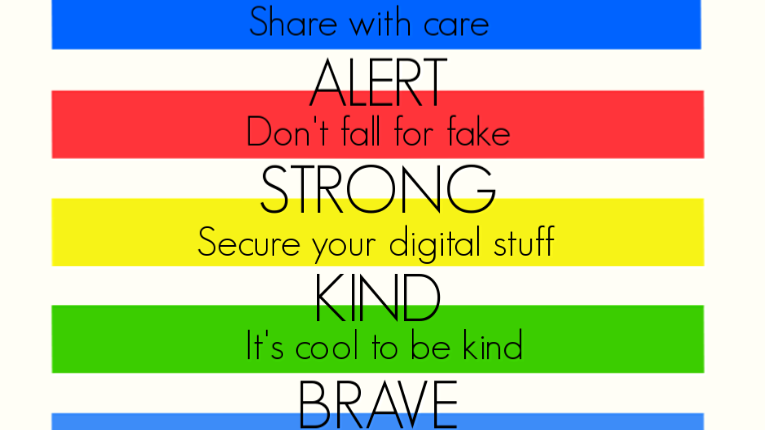… Or why you being kind is kind of a big deal for Google.
Did you know October is National Bullying Prevention Month? Google and Forward Influence Network invited me to join this campaign for a sponsored post, expressing my own personal story and opinions regarding this matter.

Why do I care so much about this matter? Well, because I have seen in person how devastating bullying can be for kids, and not only speaking of Mini but from other friends’ kids too. From isolation to self-doubt right before taking an exam, actions that are targeted for damaging someone are still too common among kids and tweens. Just these statistics make me cringe:
- 28% of students have experienced bullying personally.
- 71% of students have witnessed bullying directly.
- Only 20% – 30% of students notify adults about bullying.
- Over 50% of parents are concerned about their child being bullied.
As I mentioned above, my daughter has experienced bullying in real life but we were able to identify it in its earlier stages and at least at school it has been taken care of. However, on the internet, it can be a different story. Social media apps and sites, although it is supposed to be for older kids, has a minimum of 13 years old which is not exactly very old. And even then, peer pressure is a real kind of pressure.
That is how my daughter convinced me to let her have a Music.ly (now called Tik-Tok) account. My non-negotiable conditions were that I would open and monitor her account and activity online from my own phone and that she must keep it as private.
She has been respectful of these conditions, and having access as a user to it has given me interesting insight about how young users behave on this kind of social media environments: Most people follow and comment when they like a post, but trolls are common and ready to state something hurtful about the person (usually a young one) who sang, dance or tried to be funny on her video. Here is when I had to step in to talk about how to intervene when someone is being bullied online.
Tips for discussing how to Be Internet Kind with your family.
In order to change a negative behavior, it is necessary to understand how the bullying dynamic works. When bullying or other mean behavior happens, most of the time there are four types of people involved:
- Thereʼs the aggressor, or person(s) doing the bullying.
- Thereʼs also someone being bullied – the target.
- There are witnesses to what’s going on, usually called bystanders.
- There are witnesses to what’s going on who try to positively intervene, often called upstanders.
A family is the best group of people for practicing respect, kindness, and positivity online—because when somebody messes up (and we all do sometimes, right?), a child, parent or sibling is more likely than anyone to understand, forgive and help you learn from that mistake. We can help each other feel better when someone’s being mean to us (sometimes just by listening). We can also encourage each other to be “upstanders”: people who help the person being hurt when they see something hurtful happening and help turn negative situations into positive ones.
The first step is to be clear on what kinds of actions and behavior toward others are important to your family—how we treat other people “in our family.”
A great way to turn negative interactions into positive ones is using what I call the «Grandma rule»: Before commenting on someone’s post on social media you have to analyze what would grandma, (or your best friend’s mom, or your favorite uncle) think, feel and/or say about you talking to others like that. This moral compass also applies when you see someone being hurt in the comments of a post.

Itʼs important to remind ourselves that behind every username and avatar thereʼs a real person with real feelings, and we should treat them as we would want to be treated. I don’t know how is in your family, but in ours, we encourage each other to treat everyone with respect. Just like I was taught to do.
Be Internet Awesome is Google’s free multifaceted program designed to teach kids the fundamentals of digital citizenship and safety so they can explore the online world with confidence. The program is available in English and Spanish and consists of an ISTE standard aligned curriculum, ready-made Pear Decks for each lesson, Interland – an adventure-packed online game about digital safety and citizenship – and plenty of resources for educators and parents.
The five areas of Internet awesomeness:
- SMART: Where we learn to share with care
- ALERT: Where we learn not to fall for fake
- STRONG: Where we learn how to secure Our digital stuff
- KIND: Where we learn that itʼs cool to be kind
- BRAVE: Where we learn that when in doubt, we talk it out

How can my kids get more interactive tools for being Internet Awesome?
Go play Interland with your kids and put your kindness skills to the test!

Also, learn more about how to Be Internet Awesome at g.co/BeInternetAwesome and tell your kids’ teachers about the online curriculum so they can introduce these activities in the classroom.
In a nutshell, you can connect with Google here:
- Facebook: https://facebook.com/GoogleforEducation
- Instagram: https://www.instagram.com/google/
- Twitter: https://twitter.com/GoogleforEdu
- Website: Be Internet Awesome (English) or Sé Genial en Internet (español)
How to create a good plan to be an upstander.
If you find yourself the target of bullying or other bad behavior online, here are some things you can do:
If Iʼm the target, I can…
- Not respond
- Block the person
- Report them – tell my parent, teacher, sibling, or someone else I trust, and use the reporting tools in the app or service to report the harassing post, comment, or photo If you find yourself a bystander when harassment or bullying happens, you have the power to intervene and report cruel behavior.
When you see someone being mean to another person online – making them feel embarrassed or left out, making fun of them, disrespecting them, hurting their feelings, etc. – you always have choices. If Iʼm the bystander, I can be an upstander by…
- Finding a way to be kind to or support the person being targeted
- Calling out the mean behavior in a comment or reply (remember to call out the behavior, not the person), if you feel comfortable with that and think it’s safe to do so
- Deciding not to help the aggressor by spreading the bullying or making it worse by sharing the mean post or comment online
- Getting a bunch of friends to create a “pile-on of kindness” – post lots of kind comments about the person being targeted (but nothing mean about the aggressor, because you’re setting an example, not retaliating)
- Reporting the harassment. Tell someone who can help, like a parent, teacher, or school counselor.

Now, not everybody feels comfortable standing up for others publicly, whether online or in the school lunchroom. If you do, go for it! You can…
- Call out the mean behavior (not the person), saying it’s not cool.
- Say something nice about the target in a post or comment.
- Get friends to compliment the target online, too.
- Offline, you can invite the person to hang out with you on the playground or sit with you at lunch. If you don’t feel comfortable helping out publicly, that’s fine.
You can also support the target privately. You can…
- Ask how they’re doing in a text or direct message.
- Say something kind or complimentary in an anonymous post, comment, or direct message (if you’re using media that lets you stay anonymous).
- Tell them you’re there for them if they want to talk after school.
- In a quiet conversation in person or on the phone, tell them you thought the mean behavior was wrong and ask if they feel like talking about what happened.
No matter how you choose to be an upstander, you have both public and private options for reporting. This could mean reporting bullying behavior via a website or application interface, or reporting what’s going on to an adult you trust.








Usted realmente es parece muy fácil junto con el presentación sin embargo I hallar este asunto a
realmente algo el que creo quisiera nunca de entender.
que parece demasiado complicado y muy extensa para mí.
soy tomando una mirada de hacia delante su
posterior enviar, voy a try get cuelgan!
That text message is so sweet! I clicked on the interland link just out of curiosity and I must confess I actually played a little on it. Because I am adulting the right way LOL
This is soooo cool! THanks for sharing, I didn’t know Google was doing such a great work providing the tools for parents. I am totally sharing this info with friends and at my children’s school!